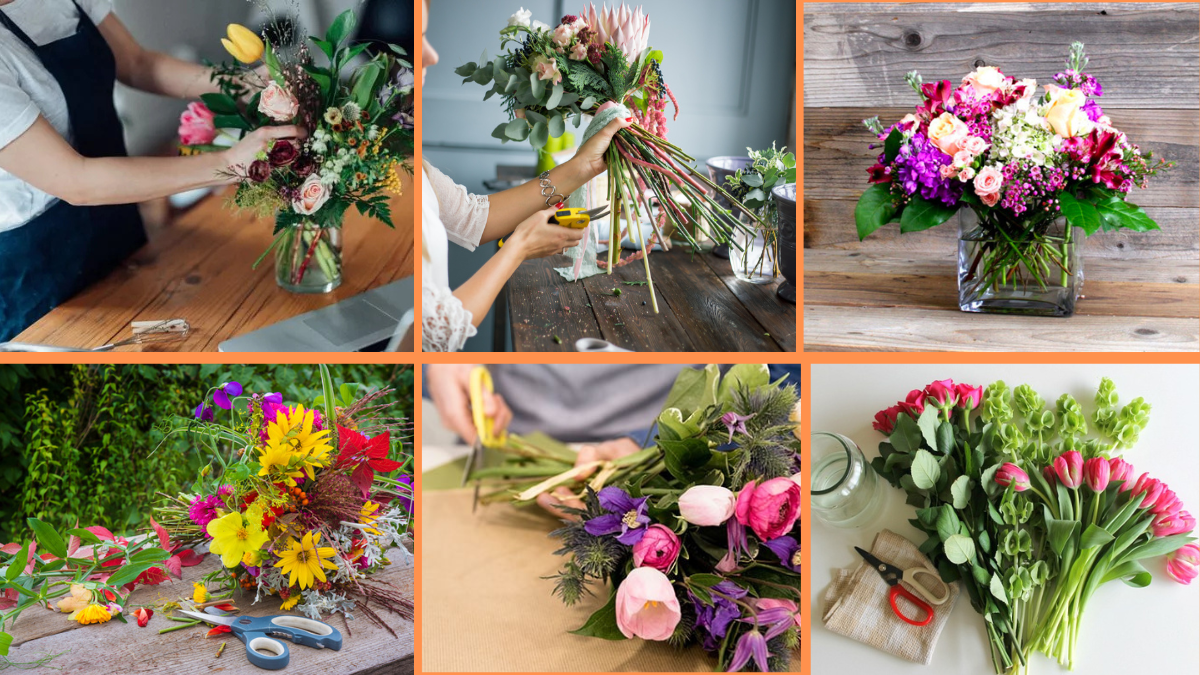There’s nothing quite like the charm of fresh-cut flowers gracing your home. Whether it’s a bouquet from your garden, a thoughtful gift, or an arrangement for a special occasion, those vibrant blooms can instantly brighten any room and lift your spirits. But as beautiful as they are, cut flowers don’t last forever.
The good news is — with the right care, you can extend the life of your floral arrangements and keep them looking fresh and lively for days, or even weeks. In this article, we’ll share 10 expert tips to keep cut flowers fresh longer, ensuring you get the most beauty out of every bloom.
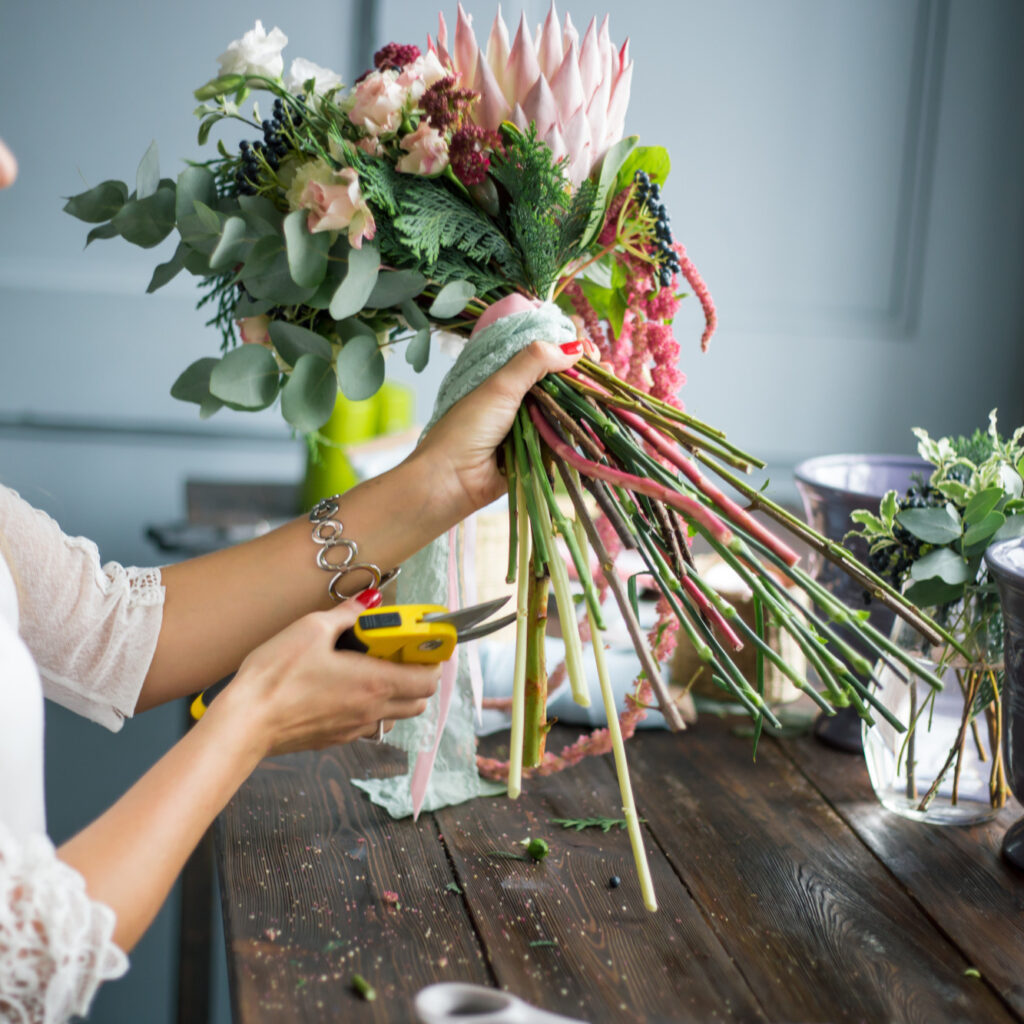
Why Cut Flowers Wilt Quickly
When flowers are cut from their plant, they’re separated from their primary source of water and nutrients. Without proper care, this leads to:
- Air bubbles blocking water uptake in the stems.
- Bacteria growing in the vase water.
- Rapid moisture loss through leaves and petals.
- Nutrient depletion in the cut flower tissue.
But with a little attention to detail, you can slow down this process and prolong the life of your blooms.

1. Always Start with Clean Vases
A dirty vase is one of the quickest ways to shorten the life of cut flowers. Leftover bacteria can multiply in the water and clog flower stems, preventing proper hydration.
What to do:
- Wash vases thoroughly with hot, soapy water before use.
- Rinse with a solution of one part white vinegar to three parts water for extra disinfection.
- Dry the vase completely before adding fresh water.
Pro Tip: Avoid using metal containers unless lined, as some metals can react with the water and harm your flowers.
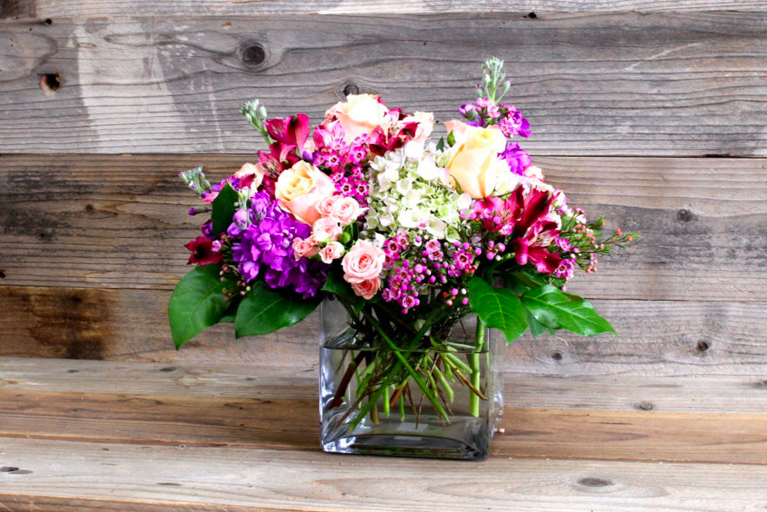
2. Trim Stems at an Angle
One of the simplest and most effective ways to help your flowers last longer is to trim their stems before placing them in water.
Why it works:
- Cutting at a 45° angle increases the surface area for water absorption.
- It prevents stems from sitting flat against the vase bottom, improving water uptake.
How to do it:
- Use a sharp, clean pair of scissors or garden shears.
- Cut 1–2 inches off the stem under running water or submerged in a bowl of water to prevent air bubbles from forming.
Pro Tip: Re-trim stems every 2–3 days to keep the water pathway open.
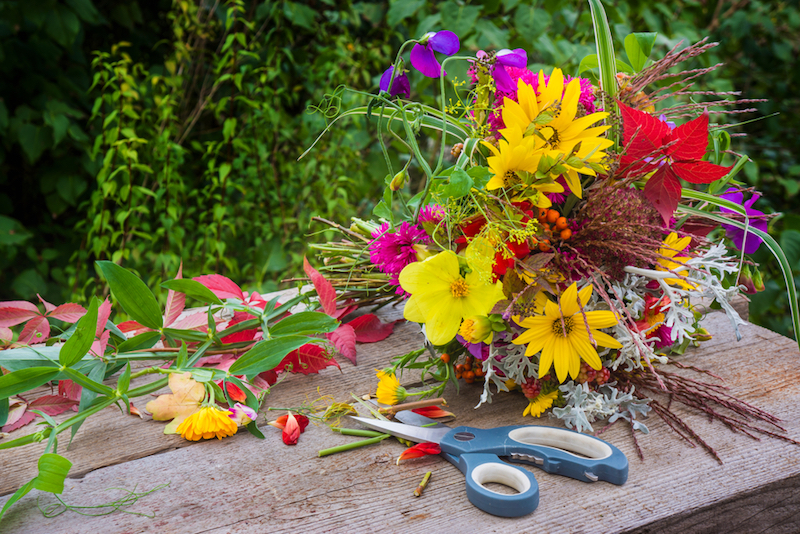
3. Remove Lower Leaves
Any leaves submerged in vase water will decay quickly, promoting bacterial growth and clouding the water.
What to do:
- Strip all leaves that would sit below the waterline.
- Keep only the upper foliage to maintain the bouquet’s appearance.
Pro Tip: Use your fingers or a small paring knife to gently remove leaves without damaging the stem.

4. Use Lukewarm Water (Not Cold)
Most cut flowers prefer lukewarm water as it’s absorbed more quickly than cold.
Why it matters:
- Lukewarm water (around 100°F/38°C) helps dissolve any air bubbles trapped in the stems.
- It improves the flowers’ immediate hydration after cutting.
Note: Exception — bulb flowers like tulips and daffodils prefer cooler water.
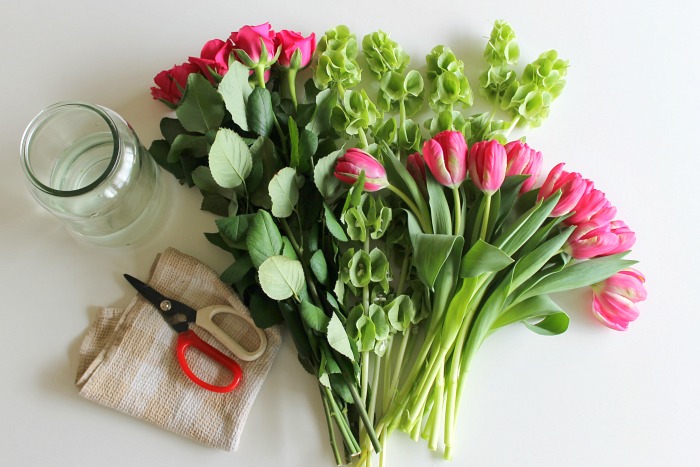
5. Feed Your Flowers
Commercial flower food packets are more than a gimmick — they contain essential ingredients to nourish your flowers and inhibit bacteria.
How it works:
- Sugars provide energy for the blooms.
- Acidifiers lower the water’s pH, improving stem hydration.
- Antibacterial agents prevent microbial growth.
If you don’t have a packet, try a homemade version:
- 1 teaspoon sugar
- 2 teaspoons lemon juice
- A few drops of bleach (optional)
Mix these into a quart of water.
6. Change the Water Regularly
Stagnant water turns into a breeding ground for bacteria and foul odors.
What to do:
- Change the water every 2 days.
- Rinse the vase and stems with fresh, clean water before refilling.
- Add fresh flower food each time you change the water.
Pro Tip: If the water starts to look cloudy before 2 days, change it immediately.
7. Keep Flowers Cool and Away from Heat
Cut flowers last significantly longer in cooler temperatures. Excess heat causes blooms to wilt and petals to drop prematurely.
Avoid placing flowers near:
- Direct sunlight
- Radiators or heating vents
- Electronics that emit heat
- Open windows with hot drafts
Ideal spot: A shaded, cool room away from direct light and heat sources.
8. Avoid Ethylene Gas Exposure
Fruits like bananas, apples, and tomatoes release ethylene gas as they ripen — a plant hormone that speeds up flower aging.
What to do:
- Keep your flower arrangements away from fresh fruits and vegetables.
- Especially avoid placing them on the kitchen counter or near the fruit bowl.
Pro Tip: Florists often store flowers in ethylene-free coolers for this reason.
9. Use the Right Vase Size
An overcrowded vase restricts airflow, increases the chance of leaf submersion, and leads to uneven water distribution.
How to choose:
- Use a vase that’s tall and wide enough for the stems to spread out naturally.
- Avoid cramming too many flowers into a small space.
Pro Tip: Cut some stems shorter to create a layered, balanced arrangement.
10. Remove Wilting Flowers Promptly
One wilting flower can produce ethylene and encourage bacterial growth, shortening the life of the entire arrangement.
What to do:
- Check your bouquet daily.
- Remove any wilted, browning, or drooping flowers as soon as you notice them.
- Re-trim remaining stems and refresh the water.
Pro Tip: Rotate your bouquet to enjoy different angles and maximize its visual impact as it ages.
Bonus Tips for Specific Flower Types
- Tulips and daffodils: Change their water daily, and keep them in cooler rooms.
- Roses: Remove outer guard petals for a neater appearance and avoid letting their heads droop by trimming stems regularly.
- Lilies: Remove pollen-covered stamens to prevent staining and extend bloom life.
Final Thoughts
Fresh flowers have the power to lift moods, brighten spaces, and bring nature indoors — but with a little extra care, you can enjoy their beauty far longer. By following these 10 tips to keep cut flowers fresh, you’ll transform every bouquet into a lasting centerpiece.
Whether you’re preserving a romantic gift, an anniversary arrangement, or a handpicked bouquet from your garden, these simple tricks will help you get the most out of your floral treasures.
Would you like a printable cut flower care guide or DIY flower food recipes for different bloom types? Let me know — I’d be happy to create one for you!
